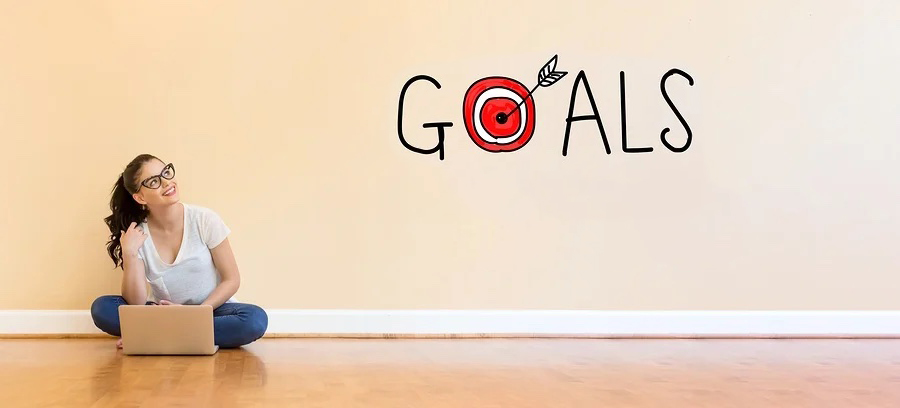The beginning of the new year motivates us to set new goals and it may also help us feel better about shortcomings of the previous year. So how can DISC help in goal setting?
DISC impacts everything we do; how we react to pressure, how we socialize, how we react when the fire alarm goes off, etc. We cannot escape our DISC style. When you see successful people, regardless of their industry, they are always confidently self-aware.
DISC Answers “How”
 Our self-awareness can guide us in our goal setting practices and in the work needed to achieve those goals. Remember, there is no DISC style that is better or worse. We simply have similarities and differences.
Our self-awareness can guide us in our goal setting practices and in the work needed to achieve those goals. Remember, there is no DISC style that is better or worse. We simply have similarities and differences.
DISC helps us to understand how we sell, lead, communicate, motivate, etc. In addition, we can use DISC to help us understand how we set goals and how we achieve them. Once you achieve more confident self-awareness, you will be better equipped to focus on your goal setting and achieving your goals.
Recognizing the Challenges of Your DISC Style
 D-styles are ambitious and comfortable setting lofty goals. However, they may lose motivation to complete the goals when they don’t see immediate results. D-styles prefer short-term goals with clear and fast results. Long-term goals will be more challenging to stay focused on daily basis.
D-styles are ambitious and comfortable setting lofty goals. However, they may lose motivation to complete the goals when they don’t see immediate results. D-styles prefer short-term goals with clear and fast results. Long-term goals will be more challenging to stay focused on daily basis.
I-styles tend to be more impulsive and emotional. They need to harness their enthusiasm when it comes to setting goals. Their optimism has them visualizing themselves at the finish line before they’ve even run the race! They love setting goals and may ignore the existing ones. They’re similar to the D-style in that they prefer short-term goals. However, they focus on the fun of achieving goals over completing tasks.
S-styles are the laid-back, planners of DISC styles. They may be too modest and cautious. S-styles want step-by-step directions and a clearly laid out plan. They may lose sight of the goal because they are constantly “planning to get ready” instead of actually getting started. However, once S-styles get started, they are unstoppable.
 C-styles are more analytical and reserved. They want clear, data-driven goals; to the point they become too analytical. They can focus too much on specific numbers and details instead of stepping back and looking at what actually needs to be achieved. Incidences of small daily failures can be more prominent rather than seeing the overall picture.
C-styles are more analytical and reserved. They want clear, data-driven goals; to the point they become too analytical. They can focus too much on specific numbers and details instead of stepping back and looking at what actually needs to be achieved. Incidences of small daily failures can be more prominent rather than seeing the overall picture.
Managing Commitment to Goals
Everyone is different. If you recognize how DISC helps, you will more likely to reach your goals and help your employees with their goals.
If you are working on goals with your D-style employee, remember to make them a part of the process. They need to feel they have a choice and a sense of independence. In addition, the goals should be challenging and clearly show how they would benefit from achieving them. D-styles are motivated by the challenge. Try telling your D-style, “show me what you can do!”
The biggest challenge for your I-style employee is follow-through. Often, the I-style sees newer and exciting opportunities to set different goals without completing the current ones. Help your I-style focus on clear steps that are broken down to daily specific behaviors. They need to document their goals and provide accountability. It may not be motivating or fun, but it will help to them maintain long-term focus and keep on track.
If you are managing goals with your S-style employee, remember to offer support and encouragement to get going; at the very least, let them know it’s available. Your S-styles may be harder to read. They may appear to be doing fine, but inwardly they may be overwhelmed. You’ll need to check in on their progress frequently and make sure they understand “how” to go about it. Telling your S-styles, “we are counting on you” or “let’s clarify and work on your goals together” are great ways to motivate them to achieve their goals.
When working on goals with your C-style employees, remember to start the process early. Don’t wait until the last minute. Help them feel motivated by creating detailed plans. Nobody likes negative feedback, but C-styles will take it more personally. C-style’s biggest fear is criticism. They want everything to be done correctly. The reserved C-style may not show emotions, even when they are devastated. It’s important to be as objective as possible and focus on the data. Help them to look at the positives and remember the big picture.
All styles have different motivators and reactions to pressure and stress. We tend to become more of our natural behavioral style under stress. DISC can proactively help you and your employees know what adjustments can be made and practiced towards achieving your goals.
Achieving Commitment

First, start on a positive footing. DISC helps remove demotivators that hinder your ability to set and achieve goals. Use DISC to develop a more confident self-awareness. You will be able to make better decisions in modifying your behaviors to insure successful goal setting and be more prepared to put in the hard work of achieving your goals.


